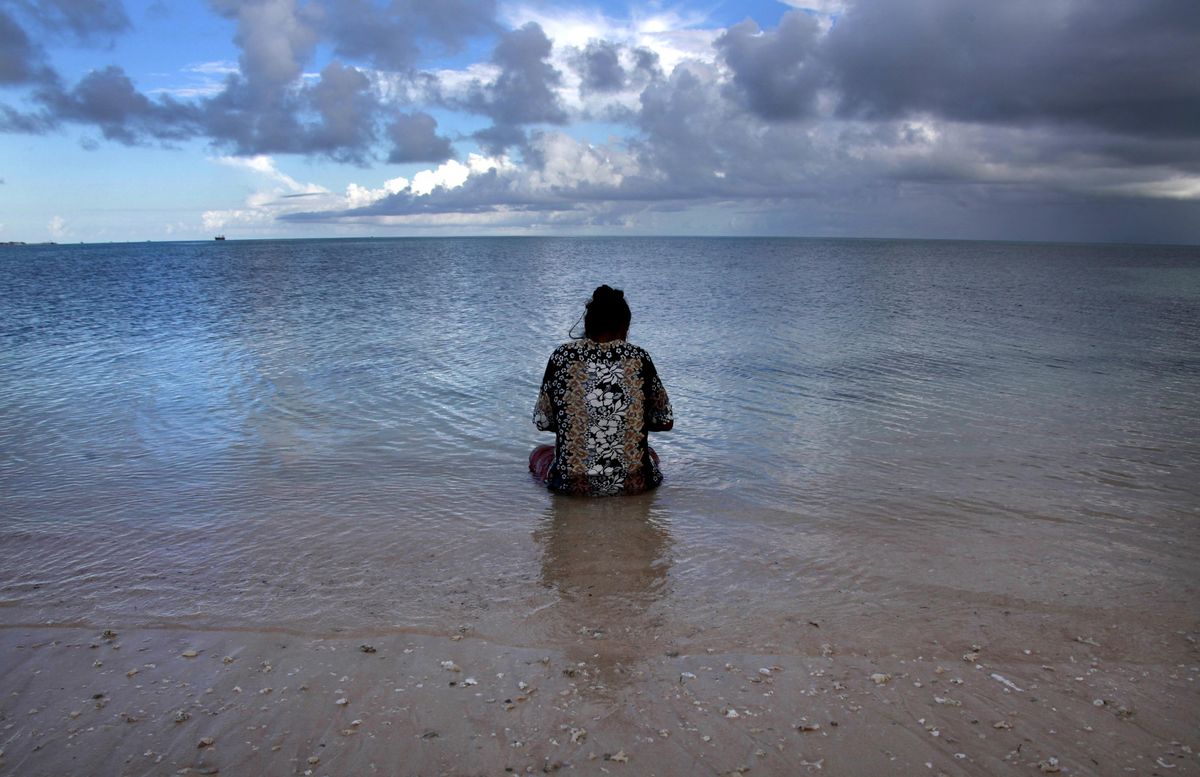Even if the US, Europe, China, and India reduce carbon emissions at the rate they've promised, much climate damage has already been done. That shouldn't stop these and other countries from doing all they can to meet their net-zero emissions targets, but they also better start preparing for a world of people on the move.
Climate change will displace an unprecedented number of people in coming years, creating not just a series of humanitarian crises in many parts of the world, but lasting political, economic, and social upheaval as those of us who live on higher ground try to find a sustainable place for these climate refugees to live.
The importance of Teitiota
In 2013, Ioane Teitiota applied for asylum in New Zealand. His home on the Pacific island nation of Kiribati, he argued, would be underwater within 15 years. (He had scientific studies to back him up.) Isn't it my right as a human being to live on land, he asked, and why wait until the flood waters come?
New Zealand, unwilling to open the door to an unknown number of other asylum seekers, said no, and Teitiota then asked the United Nations to grant him the status of climate refugee. Last year, the UN Committee on Human Rights ruled that there was still time to organize the relocation of all Kiribati's people and refused his request.
But… the UN ruling did accept the principle that governments cannot return people to countries where their lives might be threatened by climate change. That argument establishes a basis for refugee rights.
Six feet above sea level
Kiribati, Teitiota's home, a string of 33 islands with a population of about 100,000 and an average elevation of less than six feet above sea level, will become the first "climate refugee nation" when rising seas submerge much of its territory, drop salt into groundwater, and destroy the coral reefs that provide natural barriers against storm surges.
Faced with the inevitable, Kiribati's government has plans to move its entire population hundreds of miles across open ocean to land it has purchased in Fiji. They will no longer be Kiribatians. They will become subject to the laws of their new country, and their rights remain vaguely defined. It's not clear how these tens of thousands of people will support themselves, because the forested hillsides they'll live on won't allow them to grow anything, though China has promised "technical assistance" in developing the land, and they won't have fishing rights.
Bangladesh
Now, multiply that problem by tens of millions of people. More than 45 million of Bangladesh's 161 million live in coastal areas prone to flooding. Studies estimate that rising seas alone will force as many as 18 million of them from their homes as their country loses 11 percent of its land over the next 30 years. The number and intensity of tropical storms that drench these people is already rising.
Where will those people go? Will they be welcome somewhere else? Will their human rights be respected?
The bottom line. This is not a Pacific problem or a South Asian problem. This drama will play out everywhere that seas are rising and weather patterns are changing. In other words, everywhere.
The world's wealthiest countries, those most responsible for the carbon emissions that created this storm, better have a plan for this.- The coming climate apartheid - GZERO Media ›
- Podcast: Elizabeth Kolbert on extreme climate solutions - GZERO Media ›
- A history of Earth Day and the climate movement: river on fire - GZERO Media ›
- Ugandan climate activist Vanessa Nakate - GZERO Media ›
- The climate crisis: how screwed are we? - GZERO Media ›






